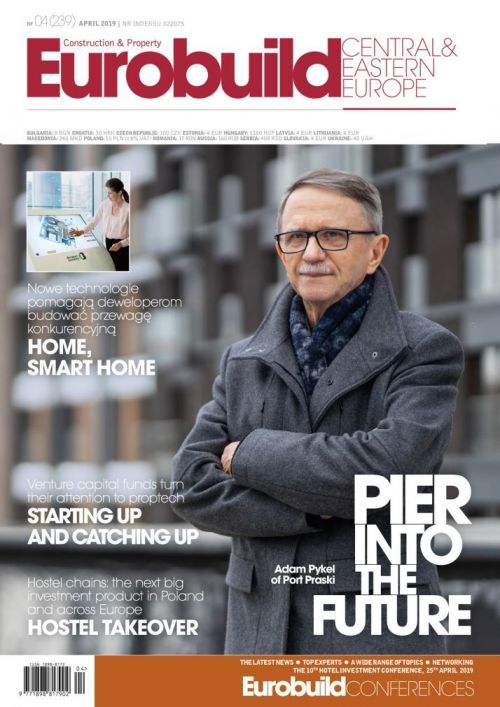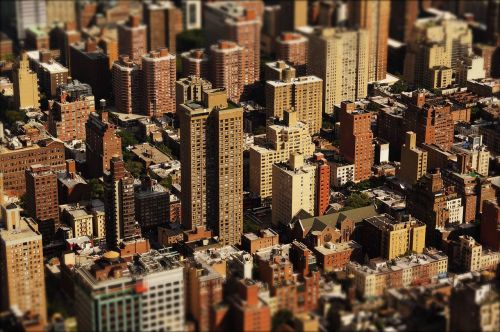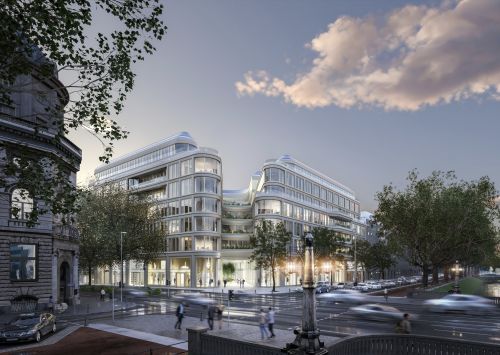Smartening up the home
Residential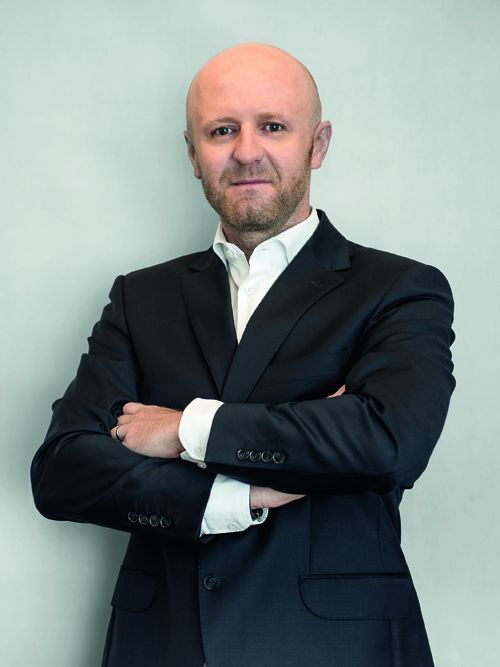
Digital technology has been gradually transforming the real estate market. This trend has been most visible in the office and warehouse sector, but now intelligent systems are also coming to the residential market. With the introduction of access control systems, electricity monitoring and air quality sensors, new apartments are getting smarter. According to the recent ‘Smart Home, Smart Community, Smart City’ report by JLL Reas, it is the increasing pace of life that has been driving this growth in the use of modern innovative home systems. Buyers are showing serious interest and are even prepared pay extra for them. Developers of residential projects have been following this trend and introducing such systems to their projects to make residents’ lives easier and more comfortable. “We leave the choice of smart home system to the individual client. There are many systems on the market and many producers – we do not want to impose anything on anyone, especially when individuals have very diverse preferences when it comes to the functionality of apartment systems. The installation of smart home systems does not require any changes to be made at the construction stage – everything is based on wireless communication, so we give our clients a free hand in this regard, although, of course, we also provide them with expert advice,” says Michał Skwarek, the sales and marketing director at Cordia Poland.
Apartments under control
Murapol, however, is a company that has gone for a slightly different approach. “In our latest projects that have been on sale since the beginning of the year, we have introduced our own Home Management System (HMS), which gives our clients automated systems in their residential units,” states Nikodem Iskra, the CEO of Murapol. The Murapol Appartme system was created by S-Labs and allows the user to monitor the hot and cold water as well as to turn it off. The system also controls the lighting, the electrics and the heating. It measures the temperature of an apartment and can be used to open and close the blinds remotely. It can also show water and electricity usage over a given period. Everything can be controlled using a smartphone app or by using a wall-mounted panel. The system is currently available in over 2,300 apartments in 15 Murapol projects in Warsaw, Gdynia, Poznań, Kraków, Wieliczka, Wrocław, Łódź, Katowice, Gliwice, Mikołów, Tychy and Toruń.
Echo follows suit
Echo Investment also has dedicated smart solutions in its new projects. “Our clients are active, flexible and mobile. Therefore, when they choose an apartment, they are looking for access to modern systems that are easy to use and make life easier. Such people manage their money using their smartphones, which is why they want to remotely manage their apartments, and our Echo Smart system, which we have developed with Somfy, provides them with such functionality,” says Dawid Wrona, the sales director in Echo Investment’s residential department. Using the system an apartment’s temperature and lighting can be controlled as well as the access to it. The first apartments on sale with the Echo Smart system are in Warsaw in the Widoki Mokotów and Moje Miejsce projects as well as in Wrocław in the company’s Ogrody Graua project. “Over the next three years we are going to develop and provide clients with 4,500 apartments equipped with the Echo Smart system, with which most of an apartment’s systems can be managed, and this will all be within the price of the apartment at no additional cost,” he adds. As well as such smart systems, Echo Investment has also announced the introduction of other amenities, such as charging stations for electric cars, as well as car sharing facilities and parcel pick-up points.
Sustainable and ecological
According to Okam, such smart systems mean more than just an intelligent building management system. “We have taken a broader approach and for us what counts most is sustainable development,” explains Marcin Michalec, the sales and marketing director at Okam. The company’s response to changing lifestyles has been to draw up the company’s New Quality Policy, which it introduced to all its new projects last autumn, beginning with its Central House project in Warsaw's Mokotów district. The apartments are to include a number of systems to improve the comfort of residents, including those that improve the air quality and the standard of space in the buildings. Electric vehicle rental points have been created with free parking for car-sharing vehicles and electric vehicle charging points. In addition, a Philips air purifier is installed in each apartment. “The projects will also include fitness areas, parcel pick-up points that are exclusively for residents, multi-purpose recreation space with co-living space divided into zones for children and adults and even charging points for mobile devices in the outdoor furniture,” reveals Marcin Michalec. The company has announced that it is also going to develop other sustainable systems, such as solar panels, which will provide the electricity to light up the common areas, and rainwater tanks for use in the garden.
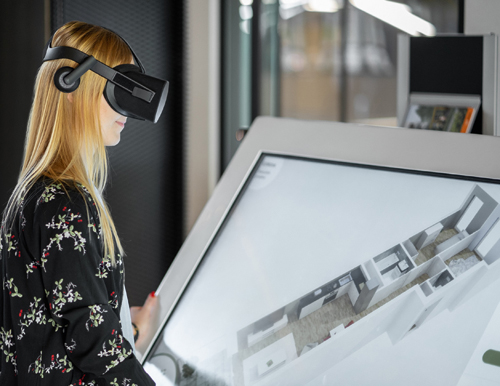
The Yslab system allows potential clients to view their future apartments in three dimensions
Comfort with lower bills
Developers have been increasingly teaming up with with IT companies recently. According to strategic client manager Szymon Ochiciński at smart-home equipment producer Fibaro, this can only be beneficial because the use of new technology in apartments is not just about convenience, but above all about savings. “Introducing such systems provides people not only with a sense of security, but also results in a real reduction of the costs of using an apartment. Interest in smart home systems is continuously growing on the Polish real estate market, which is confirmed by our research,” he says. Fibaro is currently working with many of the largest developers in Poland. The company's system has been used in more than twelve projects across the country, including in projects by Yareal, Maycom, APM, Nexity and Unidevelopment in Warsaw as well as Marina Developer in Szczecin and Abax in Lublin. “Working on Fibaro’s developer line means, first of all, equipping apartments with selected packages. The functions that developers generally offer include lighting, air conditioning, heating and the blinds and curtains,” he adds. The Murapol Appartme system also contributes to lower utility bills. “This is a new standard in residential construction. It helps to monitor electricity consumption while at the same providing the most important functions for a smart home system, such as control over the lighting and electrical sockets as well as the management of the heating. As a result it allows not only the electricity consumption to be monitored, but for all the apartment’s systems to be controlled both remotely and locally,” explains Maciej Putniorz, the marketing manager of Kraków-based S-Labs, the company that developed the Appartme system.

Rafał Gaj, the managing director of Yslab, whose smart home system is used by many of the leading residential developers on the Polish market
Looking through the window
Technology companies are also increasingly assisting developers in their sales by providing them with specialist systems. One example is the Touch system from Yslab, which displays residential estates in 3D allowing clients to view apartments in virtual reality. This provides developers with an effective new marketing tool. Not only can the client see what their future apartment will look like, but they can also walk in, check out its layout and take in the view from the window. According to Rafał Gaj, the managing director of Yslab, this heralds a genuine revolution, as it will replace traditional scale models. “Interactive 3D models allow developers to present residential estates that have not yet been built in accurate detail. The software shows projects in 3D generated in real time. When changes to the design of a project are introduced at a later stage, it is very simple to patch the software and the appropriate update can be uploaded in a short time,” explains Rafał Gaj. So far, the Yslab system has been used by such companies as Bouygues Immobilier, Polnord, Marvipol, Matexi, Cordia, Ronson Development and Sawa Apartments. “By putting on a virtual reality headset, our clients can walk around the apartment and the common areas – and see what the view would actually look like from their future balcony. This system is now in use in Warsaw and Kraków, and a developer from Bucharest has also ordered the service recently,” says Izabela Lisowska-Drewniak of the marketing department at Cordia Polska. “The system really does increases the number of interested clients. It provides data for analysis and raises customer service standards. The big advantage of this system is how easy it is to create new 3D models as content for our marketing,” states Cezary Grabowski, the sales manager at Bouygues Immobilier Polska.
Saving time and money
Kazimierz Kirejczyk, a deputy CEO at JLL, has no doubts that the development of the institutional private rental sector will also be a boost to the introduction of smart home systems. “Most of these systems help residents or tenant-residents as well as the building owner to save time and money. Some of them make it possible to use resources more effectively, such as a reducing the demand for parking spaces and, as a result, lowering the costs of constructing and operating a building,” he insists. In his opinion, such systems will first appear in projects designed initially as rented apartment buildings. “A long-term owner-investor will value the savings as a competitive advantage on the rental market. Such systems will also appear in mixed-use projects, where apartments are built next to offices, retail and services. Currently they are mainly used in the most expensive homes, but they will gradually be used on a greater scale across the market,” says the deputy CEO of JLL.
























